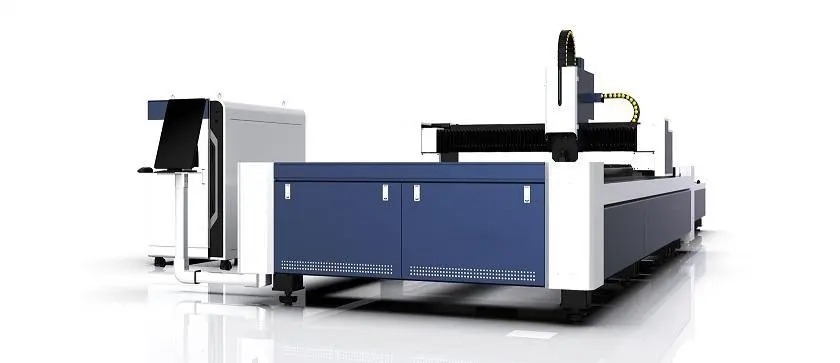Can the K40 Laser Cutter Effectively Cut Wood Materials?
Introduction
The K40 laser cutter is a popular entry-level laser cutting machine that has gained significant attention in the maker community due to its affordability and compact size. While primarily marketed for its ability to engrave and cut acrylic, leather, and thin materials, there is an ongoing debate over the machine’s effectiveness in cutting wood. In this article, we will explore the capabilities of the K40 laser cutter when it comes to cutting different types of wood materials.
Understanding the K40 Laser Cutter
The K40 laser cutter is a CO2 laser machine that utilizes a high-power laser beam to cut and engrave various materials. It features a small working area, typically around 12″ x 8″, making it suitable for smaller projects. The machine’s low price point makes it an attractive option for hobbyists, artists, and small businesses looking to dip their toes into laser cutting technology.
The Challenges of Cutting Wood with the K40 Laser Cutter
Wood is a complex material to cut with a laser due to its composition and density. It poses several challenges for the K40 laser cutter:
- Thickness: The K40 laser cutter struggles with cutting wood that exceeds a certain thickness. Due to its limited laser power, it may not be able to fully cut through thicker pieces of wood, resulting in incomplete cuts and charring on the edges.
- Density and Hardness: Wood materials vary greatly in density and hardness. Laser cutters, including the K40, may have limitations in cutting hardwoods effectively compared to softer woods. This is due to the increased resistance the laser beam encounters when trying to penetrate denser materials, leading to slower cutting speeds and potential charring.
- Beam Width: The K40 laser cutter has a fixed beam width, typically around 0.1mm to 0.2mm. This width can cause some precision issues when cutting intricate designs or small details in wood. It is more suited for broader cuts rather than intricate, detailed work.
- Fire Hazard: Wood is highly flammable, and laser cutting generates heat. The K40 laser cutter’s ventilation system may struggle to effectively remove smoke and fumes generated during the cutting process, presenting a fire hazard.
Factors Affecting Wood Cutting with the K40 Laser Cutter
While the K40 laser cutter has limitations when it comes to cutting wood, certain factors can influence its overall effectiveness:
- Laser Power: Higher laser power will improve the K40’s ability to cut wood, allowing it to penetrate thicker and denser materials more effectively.
- Focus: Properly focusing the laser beam is crucial for achieving cleaner and more accurate cuts. Ensuring the correct focal length for the wood being cut can enhance the K40’s performance.
- Wood Type: Different types of wood have varying densities and hardness levels, affecting laser cutting performance. Softer woods, such as balsa or plywood, are generally more suitable for cutting with the K40 laser cutter.
- Cutting Speed: Adjusting the cutting speed on the K40 allows users to optimize the machine’s performance when working with wood. Slower speeds may result in cleaner cuts while faster speeds may be more suitable for engraving or etching.
FAQs
Q: Can the K40 laser cutter cut through thick hardwood?
A: The K40 laser cutter may struggle with cutting through thick hardwood due to its limited laser power. It is recommended to use softer woods or thinner hardwood materials for optimal results.
Q: Can I cut intricate designs or small details in wood with the K40 laser cutter?
A: The K40’s fixed beam width may cause precision issues when cutting intricate designs or small details in wood. It is more suitable for broader cuts rather than intricate work.
Q: Is it safe to use the K40 laser cutter for cutting wood?
A: While the K40 laser cutter can be used to cut wood, it poses a fire hazard due to the flammability of wood and the potential limitations of the machine’s ventilation system. It is important to take proper safety precautions and have a fire extinguisher nearby.
Q: How can I enhance the K40 laser cutter’s wood cutting capabilities?
A: Higher laser power, proper focusing, selection of softer woods, and adjusting the cutting speed are factors that can improve the K40’s overall wood cutting performance.
Conclusion
The K40 laser cutter, despite its affordability and popularity, may have limitations when it comes to cutting wood materials effectively. It struggles to cut through thicker and denser woods and may face challenges with intricate designs. However, by considering factors such as laser power, focus, wood type, and cutting speed, users can optimize the K40’s wood cutting capabilities for projects using softer woods or thinner hardwood materials. It is essential to always prioritize safety precautions and be aware of the machine’s limitations when working with wood on the K40 laser cutter.





